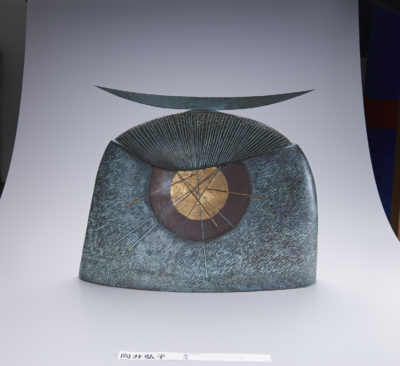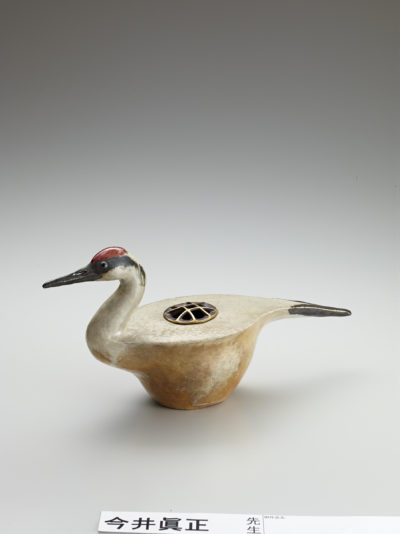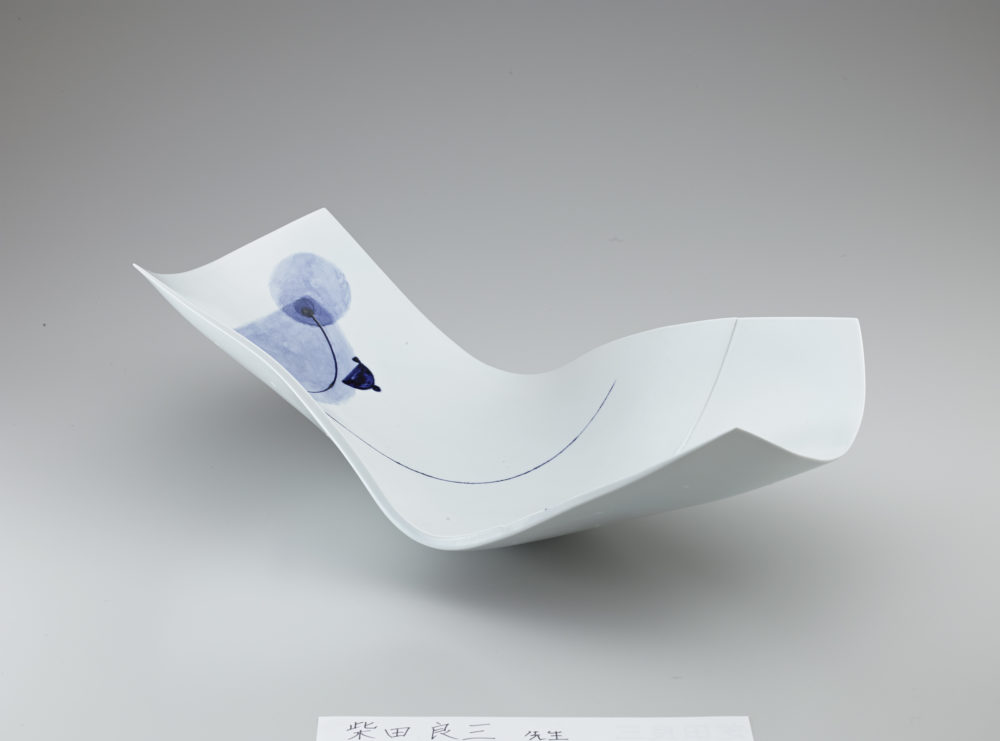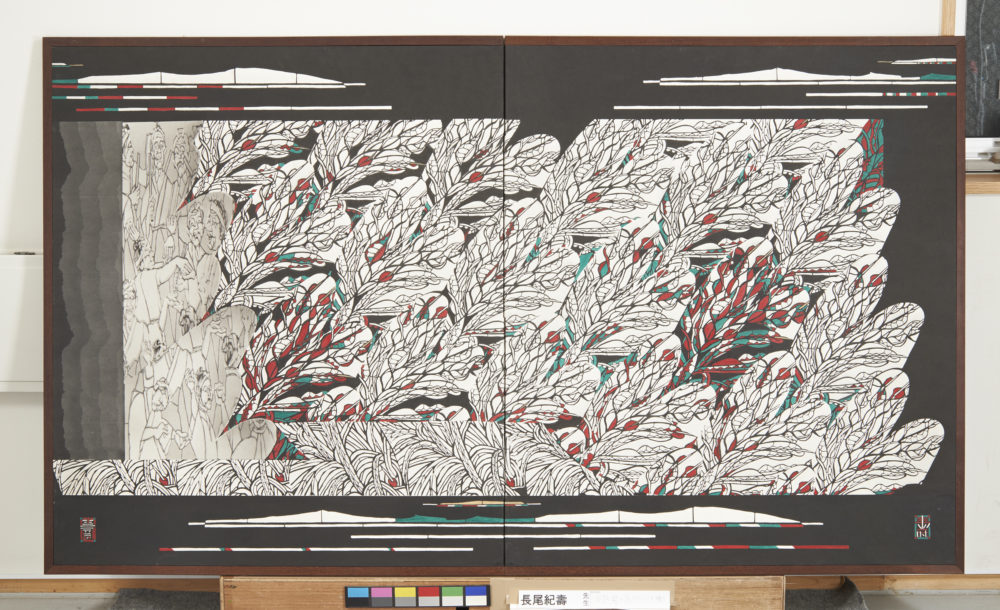Advertisement
Kogei-Kyoto Collective Makes Its American Debut At Boston's Society Of Arts + Crafts
Craft is often defined by its functionality. But what happens when traditional crafts are pushed so far beyond their functionality that they can no longer serve their intended purpose? Japanese artists from the Kogei-Kyoto collective have together been exploring this question for more than a decade.

The collective's work will soon be on display for U.S. audiences for the first time at the Society of Arts + Crafts in Boston. The gallery partnered with the Japan Society to celebrate Boston's 60-year sister city relationship with Kyoto. The artists featured in “Kogei-Kyoto at SA+C Boston: Contemporary Innovators in Japanese Arts and Crafts” each elevate their work beyond functionality to create exquisite objects that defy the boundary between fine arts and traditional crafts.
“It has been extremely difficult to define kogei,” said Shibata Ryozo, one of the artists in the collective who spoke to me through a translator. “There’s some argument, because some say craft is only functional. But of course it can be art. In Japan, kogei is trying to combine both.”
The Kogei-Kyoto collective was formed in 2006 by leading Japanese artists who wanted to develop new work that exemplified Kyoto’s characteristic fine arts and crafts. The style deeply influenced the Arts and Crafts Movement in this country and this exhibition highlights how its signature design aesthetics impacted American artists.
“There’s a kind of flavor that these artists want to capture,” said William Thrasher, a freelance curator and scholar of Japanese art who wrote the exhibition’s catalog. “It’s very classically oriented. There’s a kind of aesthetic that’s associated with Kyoto that’s very hard to express in a few words. You really must see it.”

The exhibition will feature new and traditional work in multiple mediums, including ceramics, textiles, metal- and wood-working, glass, lacquer, and fabric dyeing. Thrasher said many of the pieces are a synthesis of sculpture and function, like Bird Shaped Incense Burner by Imai Makimasa; its delicate glaze work and facial features attract the eye before its function is clear. In other cases, the object has been so removed from its function that it could only be defined as art.
Members of Kogei-Kyoto aim to use traditional techniques to create something totally new. Like Shibata, whose stunning Wave Plate transcends its function, as the ceramic object looks almost like a silk scarf floating in water.
“The purpose was to create something totally different in form and design than I had ever tried,” said Shibata. “I wanted a piece that would reflect the contemporary world using traditional techniques and skills passed down to ceramicists for many generations.”
He said his process involved a lot of experimentation. He started by placing a flat square piece of wet clay on a cloth hammock suspended from the ceiling. “I wanted to see how it flowed, what natural curves it created all by itself.” The result is a piece that appears to defy gravity.

Thrasher said this kind of artistic innovation is necessary to survive in their field. Crafts, especially ceramics, are incredibly competitive in Japan.
“In order to meet the competition and find their way, artists must push the limits of their craft into very, very different directions,” said Thrasher. “The more skilled they are, and the more of a genius they are, the more of a profound effect they have on the crafts themselves.”
Shibata thinks experimentation has to go beyond form to create something truly new. He innovates at each stage of his process, including with color choice, painting, and firing technique.
“It takes a lot of specialized skills to fire something like this in the kiln, because I’m creating a new form, color and design.”
Shibata said that finally achieving success with this piece after more than 10 years of trial and error renewed his confidence. The apparent weightlessness of the sculpture is almost whimsical, belying the countless hours and painstaking attention to detail necessary to create it.
“I met my own challenge to make something totally new using all of the techniques I wanted to try,” said Shibata. “That’s why this piece is very important, and why I chose it for this exhibition.”
This is the collective’s third international exhibit, after Paris and Hanoi.
“With SA + C as the first American institution to welcome the Artists Group Kogei-Kyoto to this country, our visitors have an exclusive chance to see the work of extraordinary artists,” says the gallery's executive director Brigitte Martin. “Boston has a long history of connection to Kyoto and Japan, and it’s exciting for us to connect with, and present, the finest craftspeople from the other side of the world.”

Shibata said that as excited as he is to share this work with Boston, he is perhaps even more looking forward to learning from local artists and craftsmen. He believes the exchange will enrich the skills of Kogei-Kyoto’s artists, elevate their creation, and reinforce the tangible influences both traditions have had on each other.
“We are grateful to have this opportunity, and hope that through Kogei and the study of art we can appreciate each other’s history, patterns of culture, and create a better understanding of each other’s lives.”
“Kogei-Kyoto at SA + C Boston,” will be on display at the Society of Arts + Crafts Seaport gallery from Sept. 10 until Nov. 10. In addition to the exhibition, which is free and open to the public, SA+C and the Japan Society of Boston will host traditional tea and incense ceremonies, kimono demonstrations and other cultural events.
